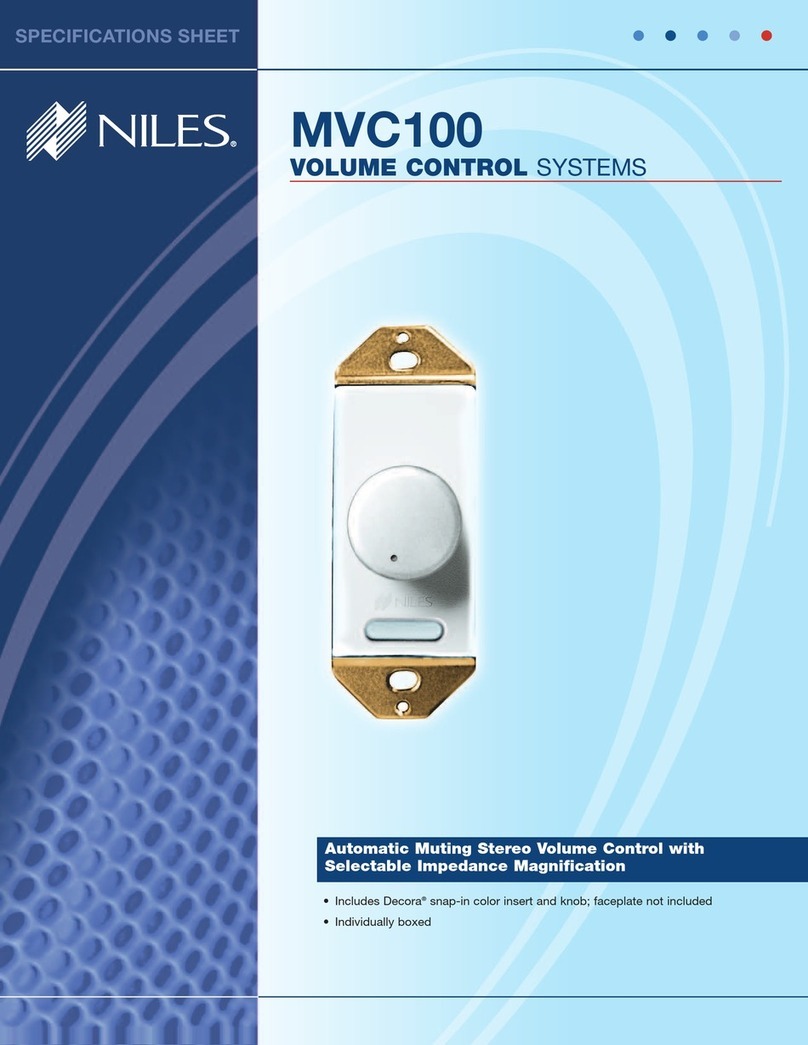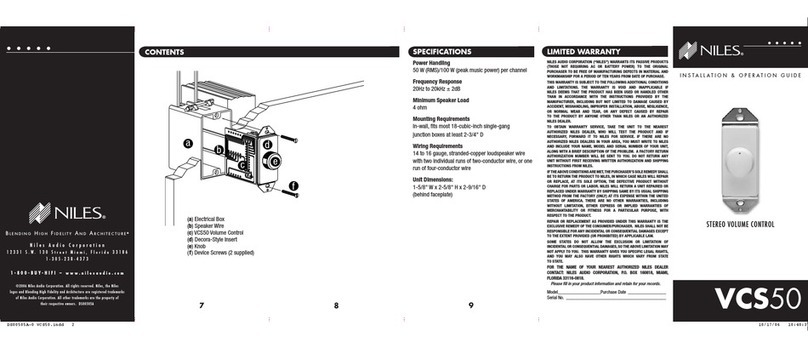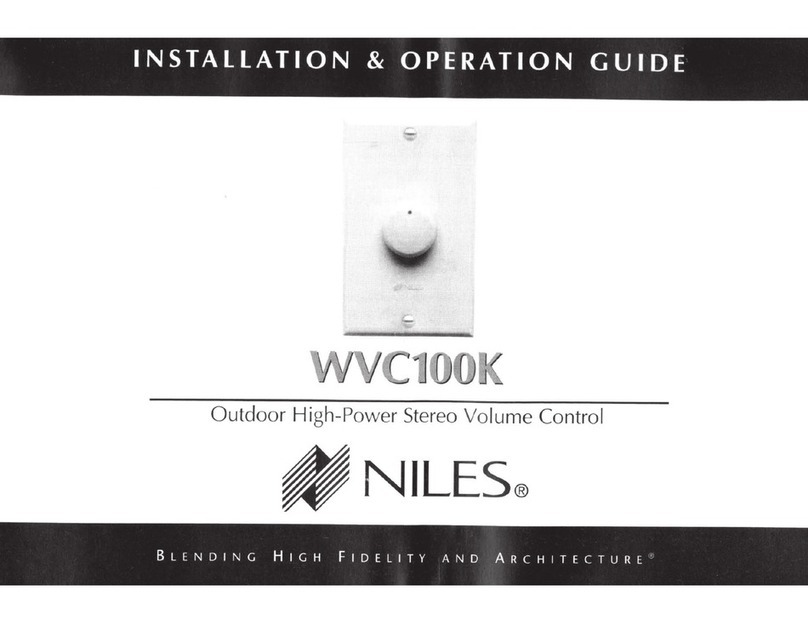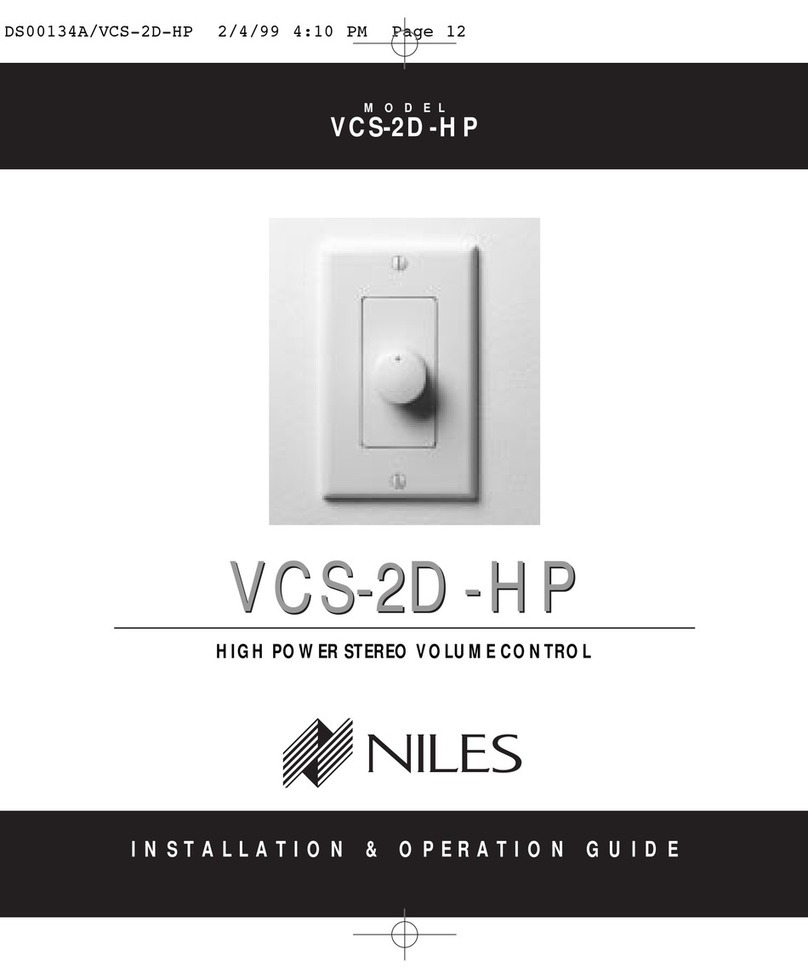Making the Room SPEAKER Connections
• CAUTION: Disconnect power to the RVL-6 and the amplifier.
• For your convenience, the AMP input connector and all SPEAKER output connectors on the RVL-6
are removable.
• Strip 3/8” of insulation from the end of each wire.
• Tightly twist each wire end until there are no frayed ends.
• Insert each wire into the appropriate hole on the connector terminals following the Speaker wiring
convention (see Figure 7).
• Tighten the screws which lock the wire into place.
Connecting to Room IR Sensor/Keypads Using the SENSOR Inputs
There are many ways to control your RVL-6 system. Each location may have a different method depending upon the
level of control desired. You can choose from Niles hard-wired push-button keypads (RP-6 stock# FG00267 and RP-7
stock# FG00281), Niles IR programmable keypad (IntelliPad stock# FG00634), or Niles IR sensors. One keypad can be
combined with one IR sensor within the same room (see Figure 8). If a particular room requires two or more IR sensors
or two or more keypads you must install a Niles XRP6+ IR Expansion Unit (Niles stock# FG00638)
Avoiding Interference
• Avoid locating any of the cables, sensors, keypads or the RVL-6 near any potential sources of Electro-Mag-
netic Interference (EMI) such as light dimmers, speed controls for ceiling fans, electrical ballasts, television
sets, large motors, heaters or air conditioners.
Room Status Feedback Signal
• When a particular room control module is on, the RVL-6 outputs a status signal on the corresponding
SENSOR input.
• The Niles IntelliPad utilizes this status signal to automate room turn-on and room turn-off.
• Some Niles IR sensors (IRR4D+, IRR4S+, and TIR1+) utilize the signal to indicate the room’s on/off status.
Recommended IR Sensor/Keypad Cable
• Each room must be home run (wired directly) to its assigned SENSOR input (see Figure 8).
• The RVL-6 connects to IR sensors and keypads using 2-conductor shielded cable with a drain wire.
Recommended cables are “data grade” cables made of two 22 gauge (or larger) conductors surrounded by
a foil shield and a bare drain (ground) wire. Data grade cable provides the capability for runs of up to 500
feet to each sensor. Examples are West Penn D291, Belden 8761 or Carol C2516. Any 22 to16 gauge 2-con-
ductor shielded cable with a drain wire will accommodate 150 foot runs to each sensor and is available at
your local hardware store.
10




































